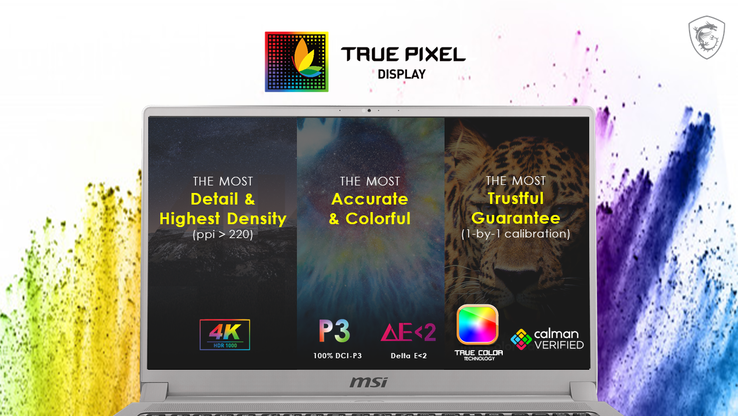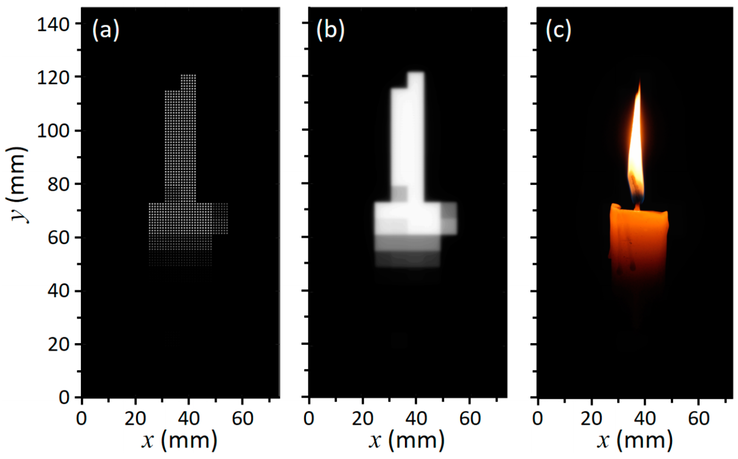How mini-LED displays benefit content creators
How mini-LED displays benefit content creators: A look at the MSI Creator 17 — the world's first laptop with a mini-LED display
Display nirvana. Mini-LED displays herald the next logical evolution of traditional LED-backlit panels. Mini-LEDs offer a more fine-grained local dimming, high brightness levels, wide color-gamut coverage, and near-OLED level blacks making them an excellent choice for content creators. In this article, we will look at what mini-LED displays actually are and how the world's first mini-LED laptop, the MSI Creator 17, can help you realize your true creative potential. (Sponsored article.)

The MSI Creator 17's mini-LED display offers excellent characteristics for content creators more than any OLED panel. (Image source: MSI)
Introduction
Previously, we have discussed in detail about what goes into selecting an ideal laptop display for gamers and content creators. Panel technology has been evolving at a much slower pace compared to other hardware such as GPUs. In fact, we still find many gaming laptops preferring to use traditional twisted nematic (TN) panels. It is only recently that we have started to see organic light emitting diodes (OLEDs) being implemented in laptops.
However, OLED, with all its benefits of high brightness and deepest possible blacks, is not without competition. New display technologies such as micro-LED and mini-LED are coming to rival OLED in terms of both cost and performance. While micro-LED is also a self-emitting technology similar to OLED, it has a niche use-case for now and is prohibitively expensive.
This is where mini-LED comes in. Mini-LED can be considered as the next step technology between the traditional LCD and micro-LED with features that are comparable or even better than OLED in many aspects. With several devices set to transition to mini-LED displays in the coming years, we will look at how this new display technology can benefit users, especially content creators.
We will also talk about the MSI Creator 17, which is the first mini-LED laptop on the market, and we will take a look at its display prowess that won it the "Digital Imaging or Photography" award at CES 2020.
What is a mini-LED display?
Traditional liquid crystal displays (LCDs) use LED backlighting to light-up pixels either from behind or from the screen edges. The LEDs used in conventional displays are about 1000 microns in size in average. Therefore, only several hundred (~400 LEDs in 15.6-inches) can be accommodated in a typical laptop display. The larger the LED size the more is the area of the panel that is occupied per LED. This poses problems with local dimming, slow response times, and poor energy efficiency. Though modern LED displays have improved on these aspects, they still don't match self-emissive OLEDs in terms of viewing angles, contrast, brightness, or black levels.
Although OLED panels have been around for quite some time, their adoption is yet to gain considerable ground outside of smartphone displays, owing to limitations in producing large OLED panels, gradual loss of luminance over time, and lower power efficiency at higher brightness to name a few. Mini-LEDs aim to overcome some of these limitations and offer a good compromise between conventional LEDs and OLEDs.
Mini-LED displays are similar to conventional LED ones in that they still use a backlight as a source of brightness. However, a mini-LED display uses miniature LEDs that are about 100 to 200 microns in size. This allows panel makers to cram thousands of them into the display as opposed to just hundreds in conventional LED backlit panels. The primary advantage of this approach is that the backlight zones are now much smaller, which enables better control over contrast, brightness, and color with blacks approaching near-OLED levels. The increased number of backlight zones also means better local dimming, which is a requirement for true HDR output.

Mini-LED advantages for content creators
Mini-LEDs offer clear advantages over OLEDs in terms of peak brightness and higher dynamic range while offering excellent color-gamut coverage and deep blacks not possible with conventional LCDs. Although OLED panels in modern laptops do offer an edge in terms of response times, they aren't actually that beneficial when it comes to brightness and color accuracy.

Content creators stand to gain three primary advantages by using laptops equipped with mini-LED displays such as the MSI Creator 17.
- High brightness — With brightness levels up to 1,000 nits, content creators can uncover and work on more details in their content.
- Higher color range — Mini-LED displays can offer excellent coverage across the sRGB, Adobe RGB, and DCI-P3 color spaces. This allows better resolution of color shades and offers much improved color accuracy. DCI-P3 is the preferred color gamut for digital cinema.
- More details in the dark — Enhanced local dimming thanks to a staggering 5760-mLED array ensures highly resolved dark areas.
stock offer Miniled Screens
| item | size | Part Number | Description |
| 1 | 17.3" | B173ZAN06.C 40Pins 3840X2160 144hz LCD Screen Display RAW MiniLED | Miniled |
| 2 | 18.0" | NE180QDM-NM1 18.0 LCD screen IPS Non Touch 2560X1600 EDP 40Pins 240Hz MiniLED | Miniled |
| 3 | 18.0" | NE180WUM-NY1 18.0" FHD 165hz 1920 x 1200 LCD Screen Miniled Non Touch | Miniled |
| 4 | 16.0" | NE160QDM-NM4 16.0 FHD 240hz 2560×1600 Miniled Non Touch LED Screens | Miniled |
| 5 | 16.0" | B160QAN02.S 16.0" WQHD 165hz 2560×1600 Miniled Non Touch LED Screens | Miniled |
| 6 | 15.6" | NE156QUM-NM1 15.6" UHD 60HZ 3840×2160 Miniled Non Touch LED Screens | Miniled |
| 7 | 15.6" | B156ZAN05.1 3840×2160 Miniled Non Touch LED Screens | Miniled |
| 8 | 17.3" | B173ZAN06.A 17.3" UHS 120hz 3840×2160 Miniled Non Touch LED Screens | Miniled |
| 9 | 14.5" | MNE507HZ2-1 14.5" UHD 165hz 3072×1920 Miniled Non Touch LED Screens | Miniled |
| 10 | 16.0" | B160ZAN01.U 16.0" UHD 3840×2400 Miniled Non Touch LED Screens | Miniled |
| 11 | 16.0" | MNG007ZA2-2 16.0" 3200×2000 Miniled Non Touch LED Screens | Miniled |
| 12 | 16.0" | NE160QDM-NM7 16.0" WQHD 240hz 2560×1600 Miniled Non Touch LED Screens | Miniled |
| 13 | 18.0" | B180QAN01.2 18.0" WQHD 240hz 2560×1600 Miniled Non Touch LED Screens | Miniled |
| 14 | 14.0" | B140QAN06.S 14.0" WQHD 2560×1600 Miniled Non Touch LED Screens | Miniled |
| 15 | 14.0" | B140QAN06.V 14.0" 2560×1600 Miniled Non Touch LED Screens | Miniled |
| 16 | 16.0“ | MNG007ZA2-1 16.0" 3200×2000 Miniled Non Touch LED Screens | Miniled |
| 17 | 16.0“ | NE160QDM-NM1 16.0" WQHD Miniled Non Touch LED Screens | Miniled |
| 18 | 17.3" | 17.3 inch,UHD,3840x2160,ANTI-GLARE,AU/B173ZAN06.C,miniLED,144Hz | Miniled |
Related Blogs








